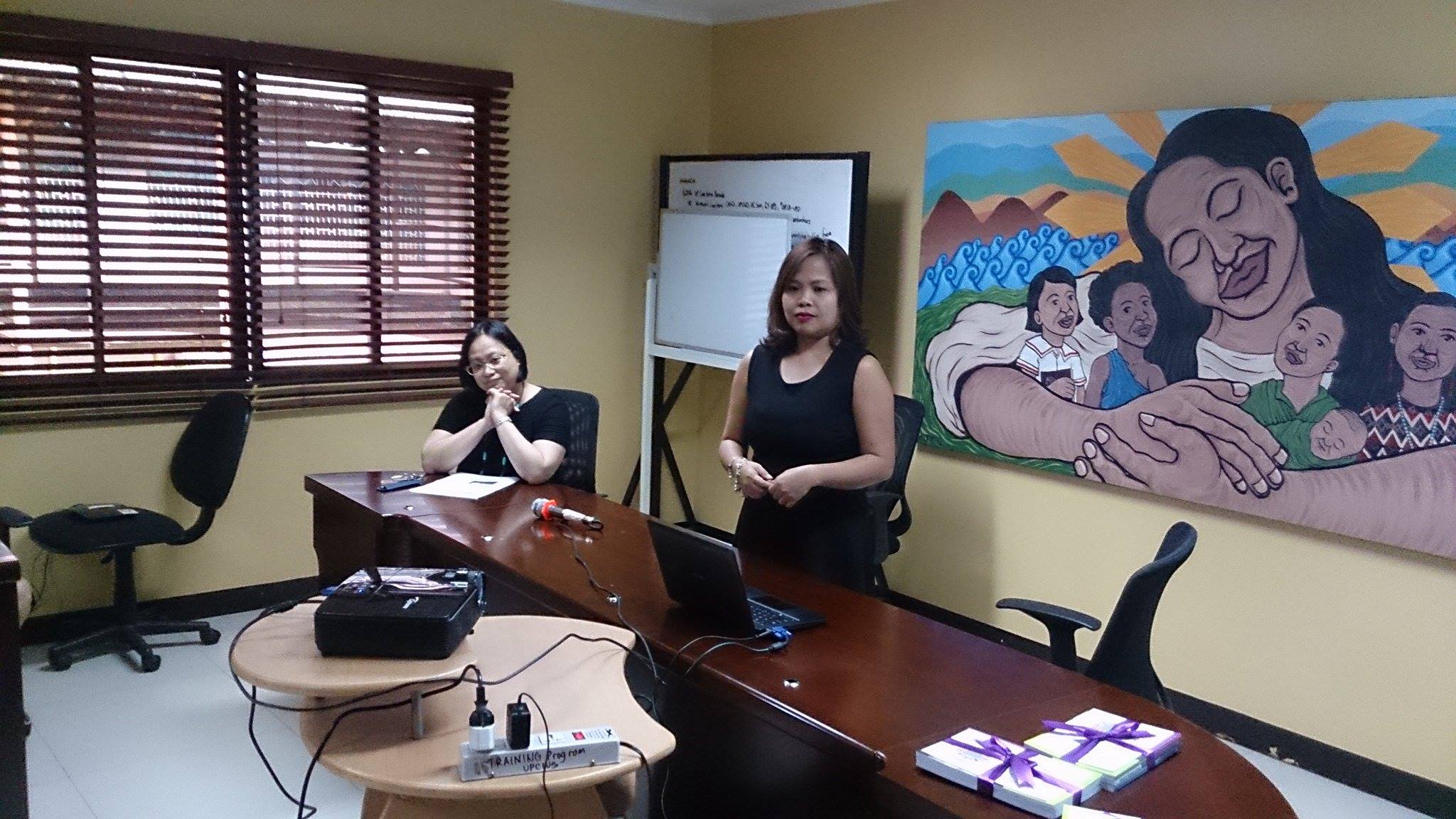As part of its research dissemination efforts, the UP Center for Women’s and Gender Studies (UPCWGS) held a Presentation and Validation of Results of Research Project: An Analysis of Gender Sensitive Child Day Care Centers towards the Creation of Guidelines in Developing Child Day Care Centers that are Gender Responsive on 8 December 2016 at the UPCWGS Conference Room. The research team, composed of Ma. Himaya Tamayo-Gutierrez of the UPCWGS, Sunshine Mandac of the Kalinga Day Care Center (KDCC), and Laniza Lacsamana of the UP Center for Women’s Studies Foundation, Inc. (UPCWSFI), presented the results of their research project to an audience which includes employees of different government agencies and non-governmental organizations with day care centers.

The research study, An Analysis of Gender Sensitive Child Day Care Centers towards the Creation of Guidelines in Developing Child Day Care Centers that are Gender Responsive, aims to:
- Map existing child day care centers in the country as represented by those in the National Capital Region (Manila), Luzon (Los Baños), Visayas (Iloilo), and Mindanao (Davao);
- Identify gender-responsive child day care centers in each area by looking at its VMG, principles espoused, policies, strategies and approaches, programs, curriculum, educational materials, language, staffing, and infrastructure;
- Describe best practices of child day care centers in the project sites following international standards and their potential for being gender-responsive; and
- Draft guidelines and a checklist in developing a gender-responsive child day care center.
The proposed guidelines will be based on the Philippine Commission on Women (PCW) Gender Mainstreaming Evaluation Framework (GMEF) and the Harmonized Gender and Development Guidelines (HGDG) for Project Development, Implementation, Monitoring, and Evaluation to engender governance. The PCW guidelines include a general GAD checklist for education projects but have no specific section on child day care centers. The study hopes to fill that gap and add on to existing assessment tools that could facilitate the integration of gender in learning institutions.
